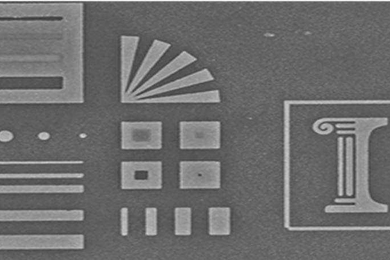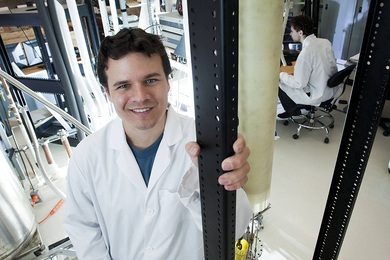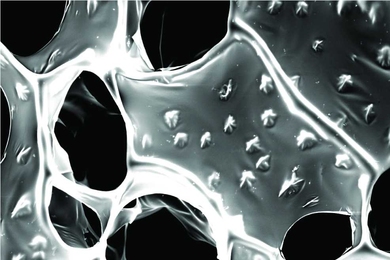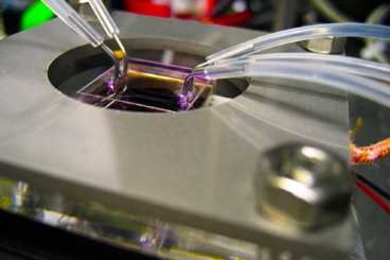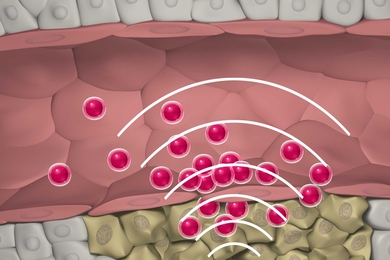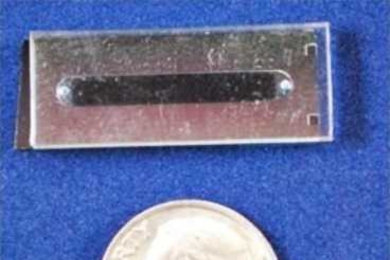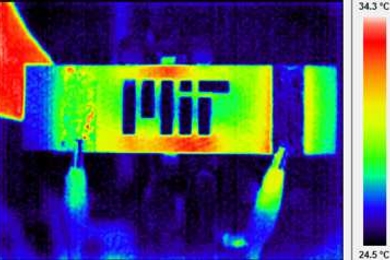Bristly particles could be boon for powerplants
Multi-scale material may have applications in heat transfer, potentially helping powerplants be more efficient.
Graphene shows unusual thermoelectric response to light
Finding could lead to new photodetectors or energy-harvesting devices.
A heart of gold
New cardiac patch uses gold nanowires to enhance electrical signaling between cells, a promising step toward better treatment for heart-attack patients.
How to grow wires and tiny plates
Liquid processing method developed at MIT can control the shapes of nanowires and produce complete electronic devices.
A new way to build nanostructures
Combining top-down and bottom-up approaches, new low-cost method could be a boon to research with a variety of applications.
Layer upon layer
Method holds promise for making two- or three-tier graphene films that could be used for new electronic devices.
Working in harmony
MIT-designed nanoparticles communicate with each other inside the body to target tumors more efficiently.'
Chandrakasan named head of electrical engineering and computer science
Succeeds Grimson as leader of MIT's largest academic department
Finding a needle in a haystack
New sensor developed by MIT chemical engineers can detect tiny traces of explosives.
Removable ‘cloak’ for nanoparticles helps them target tumors
New MIT particles could be used to deliver cancer drugs to nearly any type of tumor.
Catching cancer with carbon nanotubes
New device to test blood can spot cancer cells, HIV on the fly
Seeing below the surface
Engineers devise a new way to inspect advanced materials used to build airplanes
Going with the flow
New 3-D microfluidic system offers greater control over production of drug-delivering nanoparticles.
